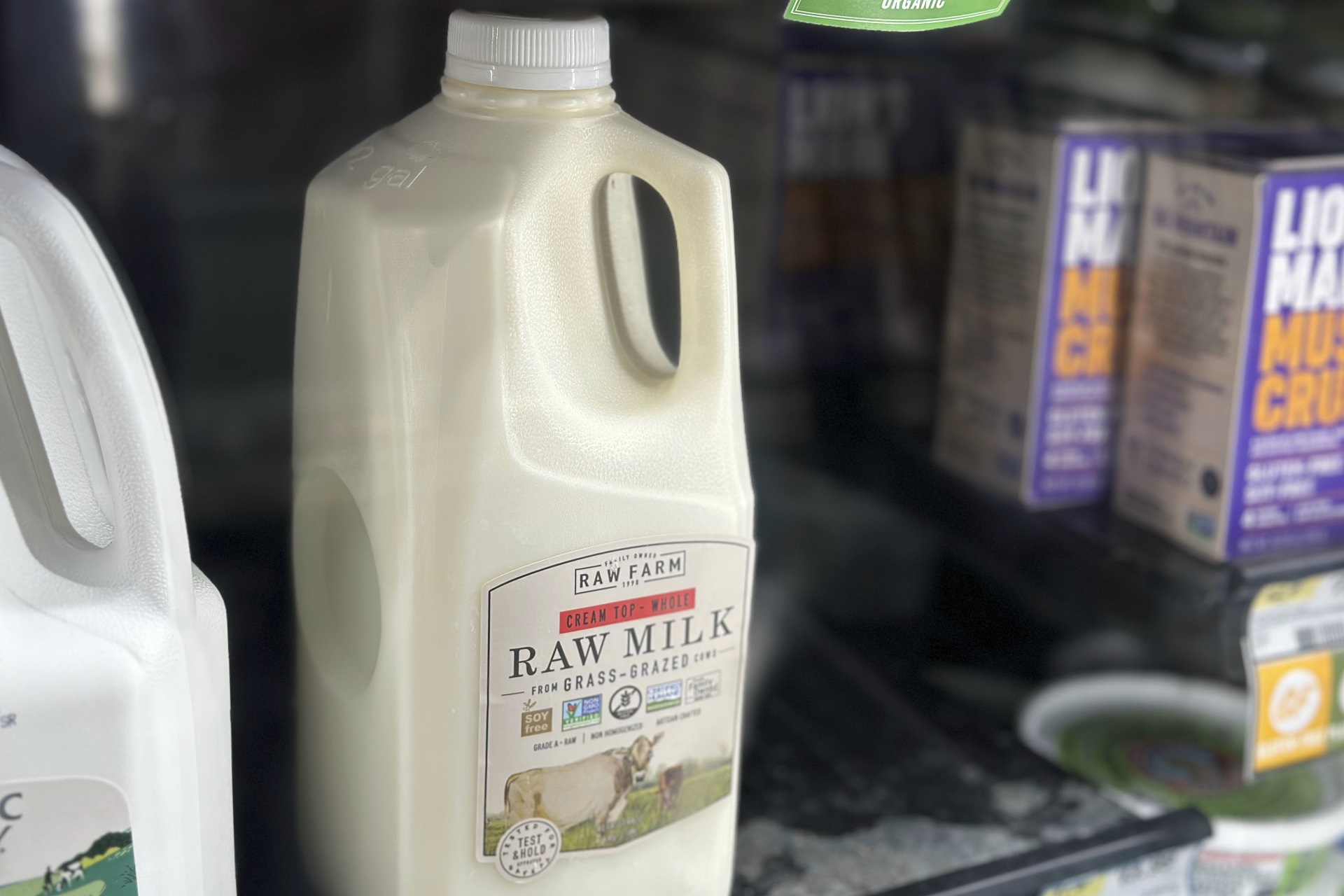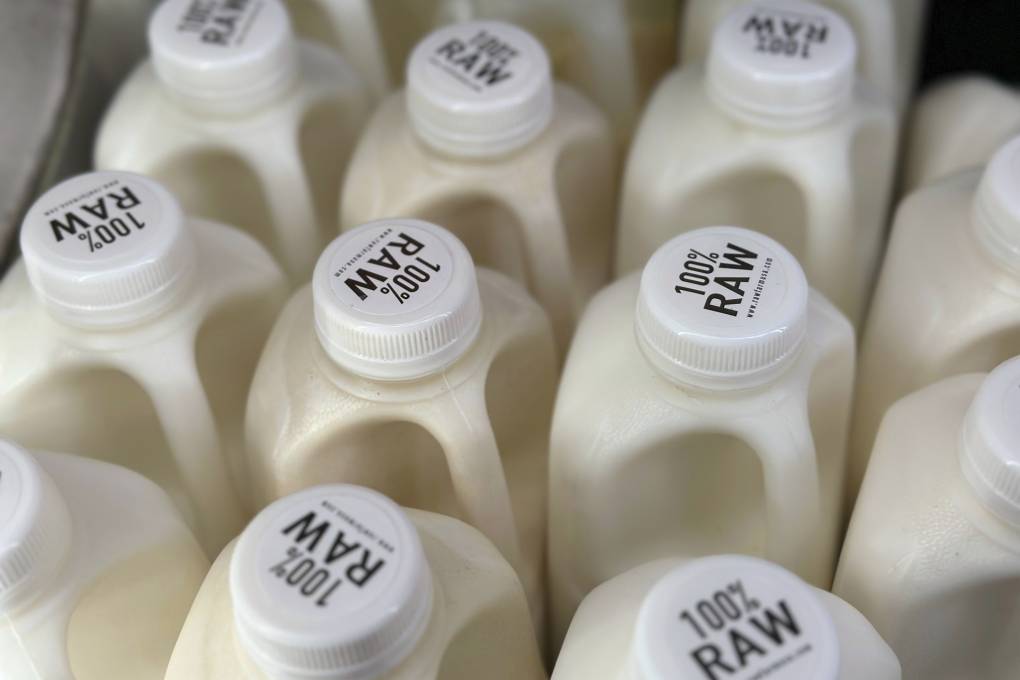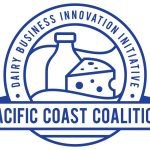
Since March 25, when the bird flu virus was confirmed in U.S. cattle for the first time, weekly sales of raw cow’s milk have ticked up 21% to as much as 65% compared with the same periods a year ago, according to the market research firm NielsenIQ.
That runs counter to advice from the Food and Drug Administration and the Centers for Disease Control and Prevention, which calls raw milk one of the “riskiest” foods people can consume.
“Raw milk can be contaminated with harmful germs that can make you very sick,” the CDC said on its website.
As of Monday, at least 42 herds in nine states are known to have cows infected with the virus known as type A H5N1, federal officials said.
The virus has been found in high levels in the raw milk of infected cows. Viral remnants have been found in milk samples sold in grocery stores, but the FDA said those products are safe to consume because pasteurization has been confirmed to kill the virus.
Whether live virus can be transmitted to people who consume milk that hasn’t been heat-treated is unknown.
However, CDC officials warned last week that people who drink raw milk could theoretically become infected if the bird flu virus comes in contact with receptors in the nose, mouth and throat or by inhaling the virus into the lungs. There’s also concern that if more people are exposed to the virus, it could mutate to spread more easily in people.

States have widely varying regulations regarding raw milk, with some allowing retail sales in stores and others allowing sales only at farms. Some states allow so-called cowshares, where people pay for milk from designated animals, and some allow consumption only by farm owners, employees, or “non-paying guests.”
The NielsenIQ figures include grocery stores and other retail outlets. They show that raw milk products account for a small fraction of overall dairy sales. About 4,100 units of raw cow’s milk and about 43,000 units of raw milk cheese were sold the week of May 5, for instance, according to NielsenIQ. That compares with about 66.5 million units of pasteurized cow’s milk and about 62 million units of pasteurized cheese.
Still, testimonies about raw milk are trending on social media sites. And Mark McAfee, owner of Raw Farm USA in Fresno, California, said he can’t keep his unpasteurized products in stock.
“People are seeking raw milk like crazy,” he said, noting that no bird flu has been detected in his herds or in California. “Anything that the FDA tells our customers to do, they do the opposite.”
The surge surprises Donald Schaffner, a Rutgers University food science professor who called the trend “absolutely stunning.”
“Food safety experts like me are just simply left shaking their heads,” he said.
From 1998 to 2018, the CDC documented more than 200 illness outbreaks traced to raw milk, which sickened more than 2,600 people and hospitalized more than 225.
Raw milk is far more likely than pasteurized milk to cause illnesses and hospitalizations linked to dangerous bacteria such as campylobacter, listeria, salmonella and E. coli, research shows.
Before milk standards were adopted in 1924, about 25% of foodborne illnesses in the U.S. were related to dairy consumption, said Alex O’Brien, safety and quality coordinator for the Center for Dairy Research. Now, dairy products account for about 1% of such illnesses, he said.
“I liken drinking raw milk to playing Russian roulette,” O’Brien said. The more times people consume it, the greater the chance they’ll get sick, he added.
Despite the risks, about 4.4% of U.S. adults — nearly 11 million people — report that they drink raw milk at least once each year and about 1% said they consume it each week, according to a 2022 FDA study.
Bonni Gilley, 75, of Fresno, said she has raised generations of her family on raw milk and unpasteurized cream and butter because she believes “it’s so healthy” and lacks additives.
Reports of bird flu in dairy cattle have not made her think twice about drinking raw milk, Gilley said.
“If anything, it is accelerating my thoughts about raw milk,” she said, partly because she doesn’t trust government officials.
Such views are part of a larger problem of government mistrust and a rejection of expertise, said Matthew Motta, who studies health misinformation at Boston University.
“It’s not that people are stupid or ignorant or that they don’t know what the science is,” he said. “They’re motivated to reject it on the basis of partisanship, their political ideology, their religion, their cultural values.”
CDC and FDA officials didn’t respond to questions about the rising popularity of raw milk.
Motta suggested that the agencies should push back with social media posts extolling the health effects of pasteurized milk.
“Communicators need to make an effort to understand why people consume raw milk and try to meet them where they are,” he said.
You can now read the most important #news on #eDairyNews #Whatsapp channels!!!
🇺🇸 eDairy News INGLÊS: https://whatsapp.com/channel/0029VaKsjzGDTkJyIN6hcP1K

























